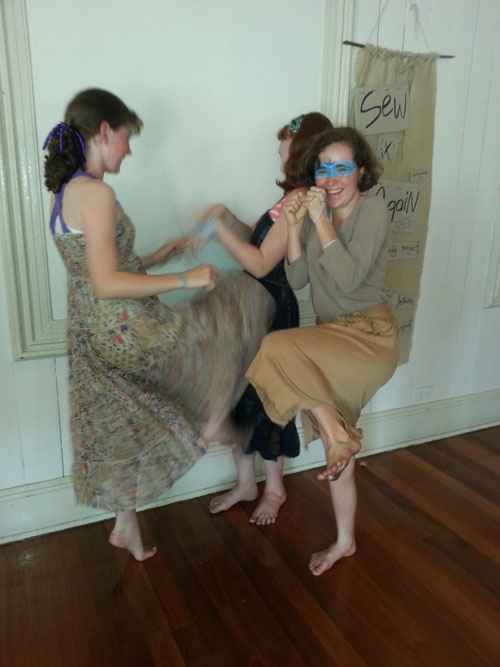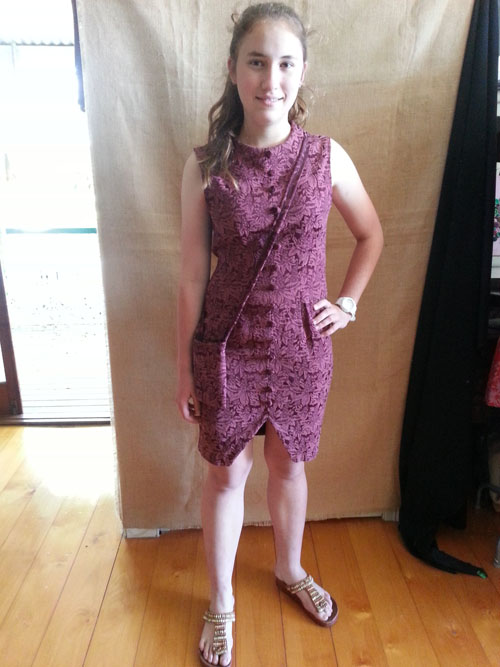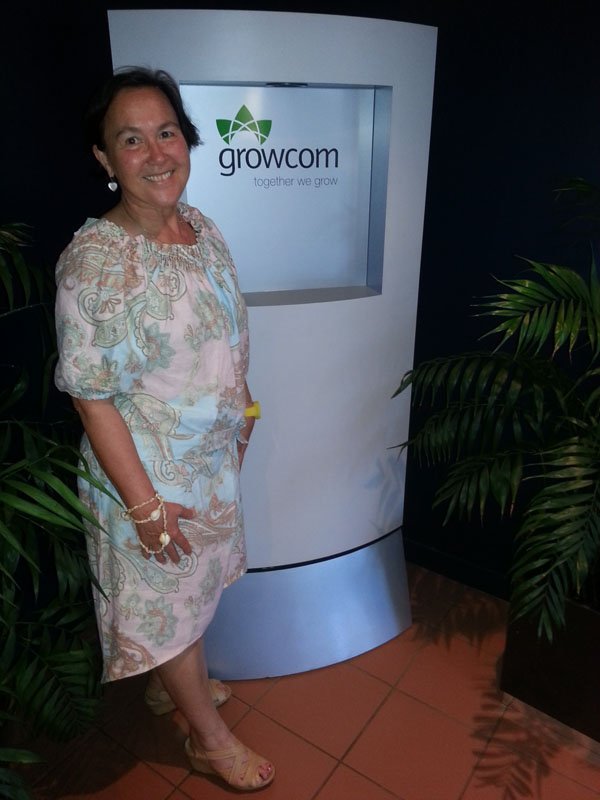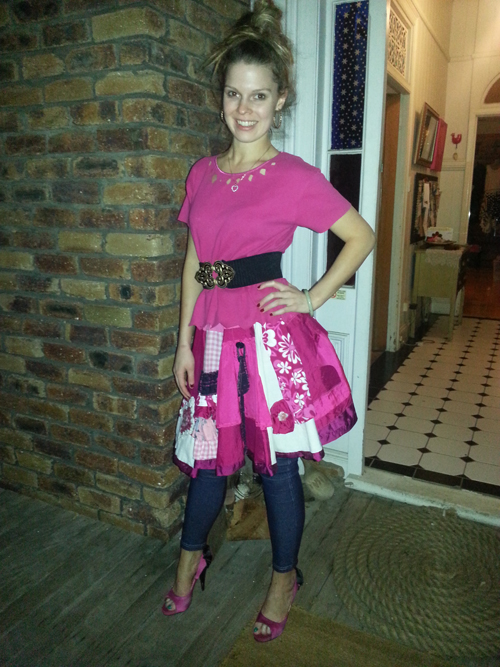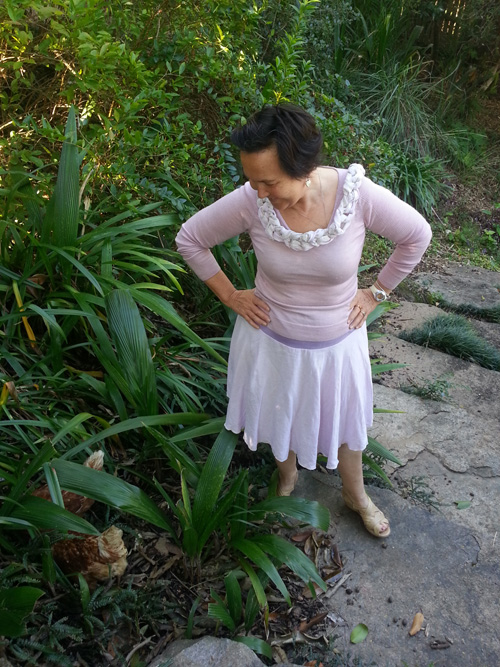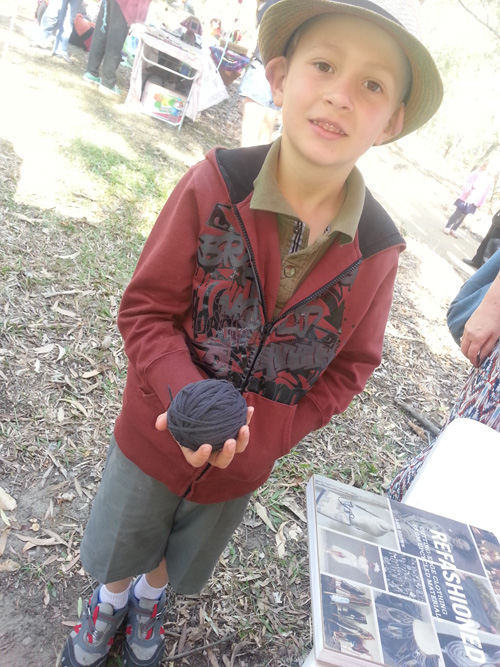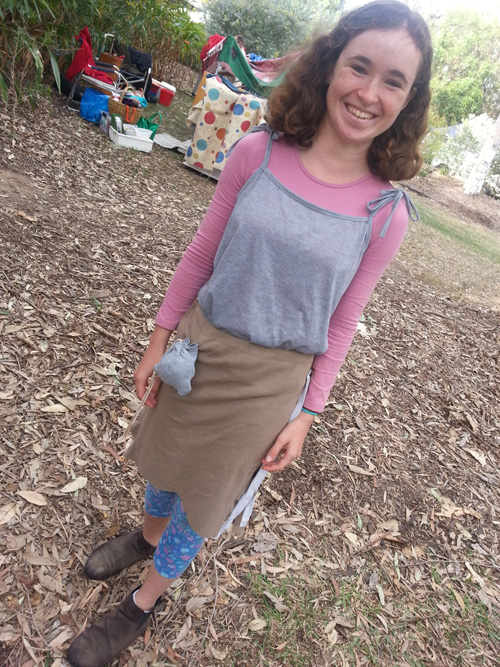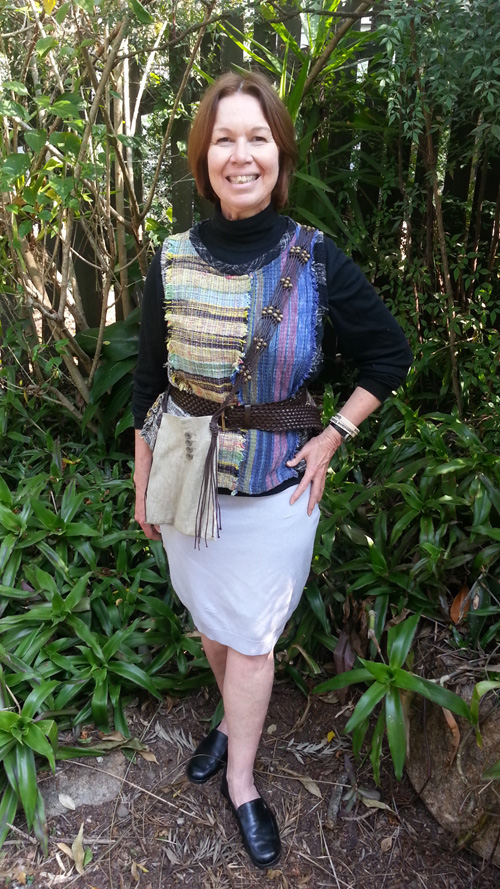Nearly a year ago, I wrote this career-change summary: Jane Milburn is an agricultural scientist by training and an issues-based communications consultant by practice. Sew it Again is a journey into creativity, empowerment, thrift, sustainability, ecological unhealth and wellbeing – woven with threads of childhood, professional expertise, networks and nature. During 2014, Jane is making a daily practice of upcycling garments from her own and others’ wardrobes as a way of sharing a creative way of dressing.
The decision to sew a fresh seam in life coincided with three children making their own way in the world (sad but good too, freeing up space and time) doing postgraduate study (Grad Cert Australian Rural Leadership) and the loss of my youngest brother Paul in an accident (a reality check about the finite nature of life).
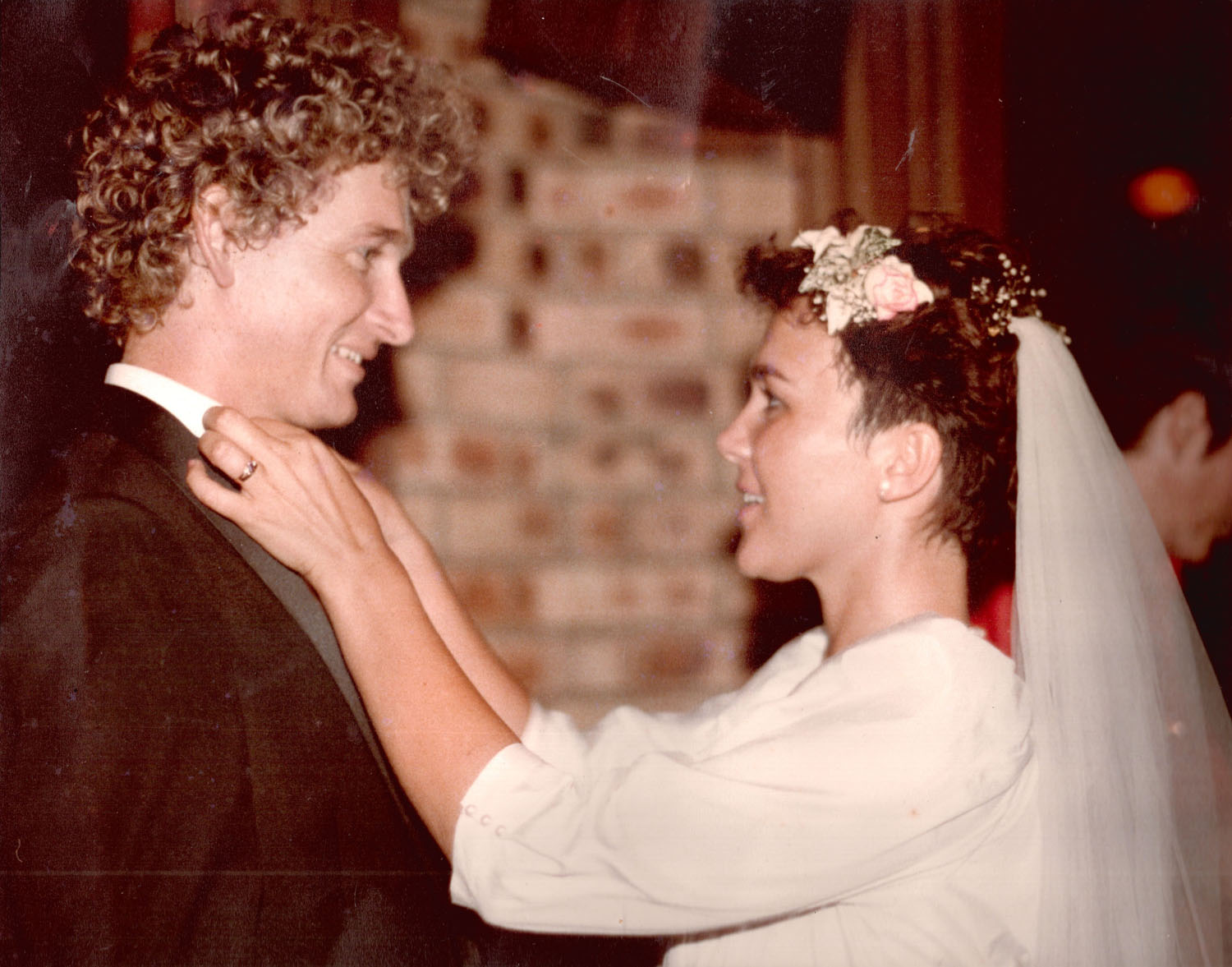 So here I am, sewing every day – on one hand as a protest against the fast-fashion churnover of clothing that is leading to waste and exploitation of natural resources and people – and on the other hand demonstrating a creative way to bring home-sewing into the 21st century. This Sew it Again year is only possible thanks to my lifetime partner, chief backer and supporter Mr Darcy, my husband. (See our wedding photo right). Continue reading
So here I am, sewing every day – on one hand as a protest against the fast-fashion churnover of clothing that is leading to waste and exploitation of natural resources and people – and on the other hand demonstrating a creative way to bring home-sewing into the 21st century. This Sew it Again year is only possible thanks to my lifetime partner, chief backer and supporter Mr Darcy, my husband. (See our wedding photo right). Continue reading
